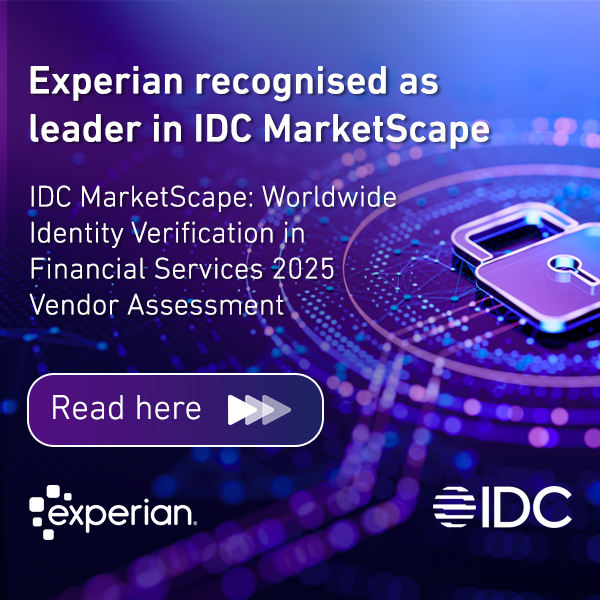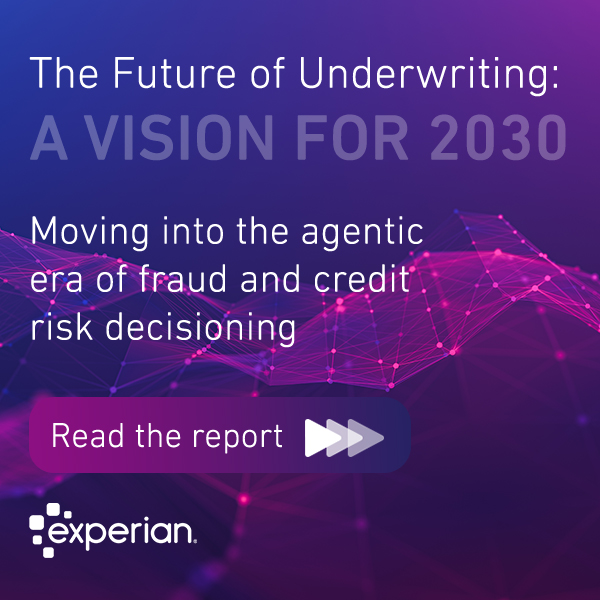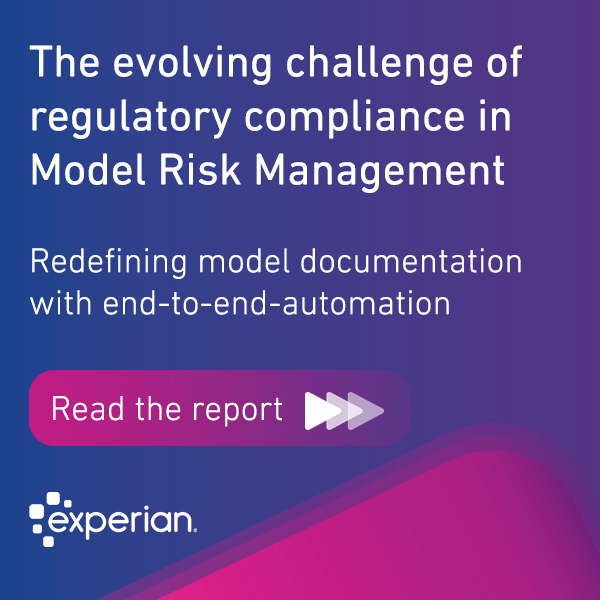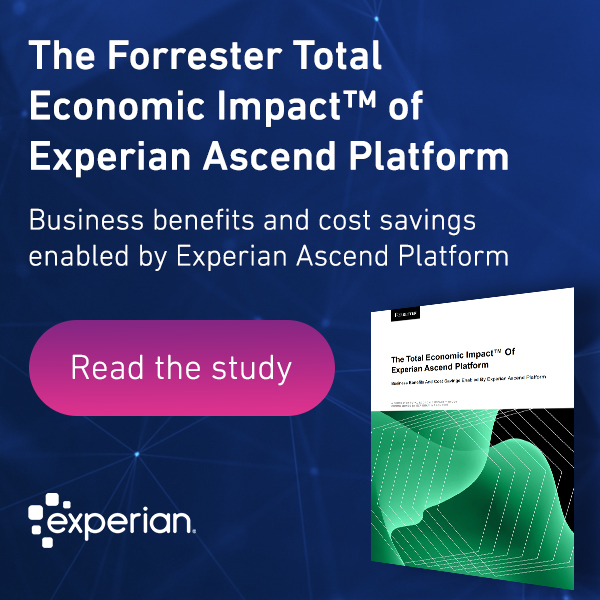Tag: Advanced analytics

With an ever-growing number of data sources, businesses must be able to rapidly access and integrate them into decisioning processes using no-code tools to stay ahead of the competition. Today’s customer journey has become increasingly sophisticated. As most firms that interact with customers can attest, this journey is a dynamic process shaped by a range of decisions. Businesses need to decide what is the most compelling offer to deliver to a new customer. Should you approve their loan application? Could the customer gain more from sustainability-linked loans or greener mortgages? What is rich data? These diverse decisions are ideally informed by rich data. This is all the available data, including new data derived from analytics using advanced techniques such as Machine Learning and using rules to make predictions and to calculate scores. While most firms have this data, it is difficult to gather, prepare and integrate into the decisioning processes. Multiplicity of data sources Data types and sources are growing. With regulatory bodies gradually approving the use of more data globally, businesses are faced with an opportunity dressed up as a challenge. Speedy integration of different data sources gives organizations a competitive edge, so finding vendors that can enable firms to utilize available data will positively impact them from a cost efficiency perspective, while also creating the potential for revenue growth. The future is to empower business users with no-code data management No-code data management capabilities add a whole new meaning to self-sufficiency for businesses. It will enable teams across organizations to rapidly change data-driven strategies without much vendor involvement. Gartner estimates that by 2025, 70% of new applications developed by enterprises will use low-code or no-code technologies, up from less than 25% in 2020. Moving towards client self-service with no-code capabilties is the goal of most businesses. These capabilities are already allowing teams supporting clients to rapidly integrate data sources into their solutions, providing the perfect test ground for business user enablement. If a decision strategy requires changes and a new data source, PowerCurve users can quickly adapt. They can now gather and prepare the right data and deliver it to the system within days. These changes can be instantly published through secure and easily adjustable APIs that support the latest industry standards and frameworks such as OpenAPI and OAuth. An effective customer journey relies on informed decisions and these decisions rely on the right data and advanced analytics. While Experian's PowerCurve platform is well known for automating a range of decisions across the customer lifecycle, it is the data integration capabilities that ensure these decisions are informed by rich data and insights. Creating a harmonious relationship that produces superior and trustworthy results for businesses. No-code data management enables businesses with easy and rapid data source access to deliver rich and insightful data to decisioning processes.

Latest Global Insights Report: How supporting consumers in a time of uncertainty can help businesses adapt and grow A changing economic landscape needs a new approach The new digital consumer is here to stay and they expect businesses to support them with the products and services they need to navigate the rising cost of living, in a secure digital world personalised to them. Find out how: Our latest research reveals how economic uncertainty is evolving the experiences and expectations of digital consumers. From increasing the demand for credit options and financial inclusion, to deepening the need for trust, security and being seen. Read the report to find out how businesses can benefit from responding to changing consumer needs - including the additional tools and resources consumers and businesses may need to maintain financial health: What do digital consumers want? The global economy is under pressure with inflation raising prices across the world. In response, consumer behaviour is shifting, as people tackle the increased cost of living, and the prospect of an economic downturn. Digital consumers are continuing to manage their lives online and are expecting businesses to take the lead on improving the digital environment. A quality online experience is paramount, or consumers will move on. 1 in 4 businesses lost more than 10% of their customers in 2021, due to “suboptimal” digital experiences. A range of payment options including BNPL As prices rise, consumers are expecting to spend more online and are looking for varied credit options to help manage their finances. The demand for buy-now-pay-later (BNPL) options is also growing, with more consumers using BNPL to buy household staples. Consumers look favourably on companies that offer BNPL, but companies will have to find the right balance between supporting customers and managing credit risk. 32% of BNPL purchases were for groceries, up from 27% in March. Financial inclusion Economic uncertainty is accelerating the need for greater financial inclusion. Businesses need to find more creditworthy consumers and support them with responsible and sustainable products and services. 1 in 3 businesses is in the process of rolling out financial inclusion initiatives Security and trust As consumer need increases, so does fraud, including cost of living scams. Security is now a top priority for consumers around the world, alongside privacy, convenience and personalisation. 50% of consumers say they’re concerned about their online transactions. However, trust in emerging customer recognition tools is increasing, with consumers’ top three including physical biometrics, PIN codes and behavioural biometrics. Personalisation Consumers who trust businesses are more willing to share their data, enabling companies to create more personalised experiences, which in turn, improves consumer trust. 46% of consumers say that personalisation (receiving offers that fit their needs) is the most important aspect of their online experience. Read our report to discover the challenges and opportunities facing consumers and businesses and the tools, resources and strategies that can help your company get ahead. The survey results represent 6,000 consumers and 2,000 businesses across 20 countries, including Australia, Brazil, Chile, China, Columbia, Denmark, Germany, India, Indonesia, Ireland, Italy, Malaysia, Netherlands, Norway, Peru, Singapore, South Africa, Spain, UK, and US. Read our report

Experian’s latest research shows that the crisis of the past few years has yielded a new, savvier digital consumer. With the rapid move to online services amidst the pandemic, consumers worldwide adapted—and quickly. Fifty-three per cent of consumers say they have increased their online spending and transactions within the past three months, and 50% plan to increase it even more over the next few months. As online activity has surged, so too have consumer expectations for friction-free, secure transactions. More than 80% of consumers say a positive online experience makes them think more highly of the brand. And if businesses don't meet those expectations? Well, switching providers is only becoming easier . For financial service providers, the evolution of consumer behaviour presents both an opportunity and a challenge. It's never been more critical to ensure that digital experiences are convenient and frictionless. However, soon that will be the expectation and not the draw for new customers. Instead, finding unique ways to compete will be what separates the good from the great. Convenience versus risk In our latest survey, consumers ranked security, convenience, and ease of recognition as the top contributors to a positive online experience. All of these are vital components to providing a frictionless transaction. However, seamlessly logging in to a financial app, applying for credit, or managing a balance isn't yet the standard for every provider. Many traditional banks continue to play catch-up with digital upstarts, but consumers are becoming less tolerant of barriers to accessing services and products, with 23% saying that businesses aren’t meeting their expectations for digital experiences. This provides businesses with the opportunity to attract and retain new customers, especially those tired of manual account onboarding processes. For instance, leveraging emerging recognition tools adds to the convenience factor, limiting the time customers spend inputting data and streamlining the entire experience. But even as they continue to prioritise frictionless processes, businesses should be wary of sacrificing security or increasing their own risk. In our survey, 73% of consumers said that the onus is on businesses to protect them online. While they don't want security efforts that slow down their transactions, they expect the level of security to remain high nonetheless. On the business side, we've also seen providers creating friction-free options for lending—for example, in the Buy Now, Pay Later (BNPL) space—that enable consumers to access credit nearly immediately. But even with the convenience, there is still a need to manage affordability and ensure that these customers aren't introducing additional risk to credit models. Differentiate to retain customers: The growing role of rewards With all the innovation underway, a friction-free experience will become the standard. And it may already be so among digital-first businesses. This begs the question: If a secure, convenient experience is the norm for consumers, then how can businesses differentiate themselves? The next competitive differentiator will be how businesses reward customers for their loyalty. It's no longer enough to provide new customers with low-interest or no-interest credit on small purchases. Forward-looking financial services providers are getting far more creative with their rewards. For instance, businesses offering BNPL are enabling their customers to accumulate loyalty points for using the service with multiple retailers. Customers can then put those points to use as discounts on merchandise from the places they already love to shop. Data sharing and analytics play a significant role in this approach, allowing businesses to understand their customers' behaviours and personalise offers and rewards. Notably, our survey reveals that 83% of consumers say their awareness of how companies use their personal data for security, convenience, and personalisation has increased. Today's consumers are as digital as ever, and there's no going back. While friction-free may have been the differentiator before, it's rapidly becoming the standard. Going forward, financial services providers will need to find a new way to compete for savvy consumers who expect—and demand—secure, frictionless online experiences. Stay in the know with our latest research and insights:

The ecosystem of credit lending platforms and technologies has rapidly grown in the past year. Lenders now find themselves in an increasingly competitive market with new players emerging on the scene. More companies now have access to advanced analytics and automation capabilities, and this is helping businesses improve the accuracy and inclusivity of consumer lending decisions – a giant step toward achieving their growth ambitions. Our recent research shows that one of the top priorities for businesses has been to invest in new artificial intelligence and machine learning models for smarter customer decisions. But how effective is building new AI models without considering the data? What is data-centric AI? Building AI models on fixed data has already become an outdated approach. But by coupling data with the best model, better outcomes can be achieved. The concept of data-centric AI was coined by leading thinker in the AI space, Andrew Ng. Ng believed that models in production are only as good as the point-in-time data used to build them. As businesses continue to receive new data, this data needs to feed back into the model if it’s going to continue delivering the best results. This continuous loop of enriching the model with new data can be applied across use cases. The value of data-centric AI models for acquiring new customers By using the latest available data, rather than from 6-12 months ago or longer when the model was originally developed, data-centric AI models can: • More rapidly account for changes in the economy and consumer finances • Reach under-represented populations and provide greater access to credit • Take advantage of newly available types of information from data providers The value of data-centric AI in existing frameworks More observations AI is often limited by the data that was used to create the model. By using a more fluid open-source alternative, different data sets can be inputted to get more observations based on different characteristics and findings. For example, if a business wants to acquire a new type of customer, traditional AI would require a new model with new data sets to be in order to target this new customer. With data-centric AI, businesses can use an existing model and simply expand the data, thus allowing the model to work far more efficiently and target a new consumer base. It is a shared view that businesses should not build models with just their own data, because those data sources are too limited. At the very least, businesses want to combine data with a peer sample. However, an even better way is to use hybrid data sets in order to get the most observations. Data-centric AI makes that process easy without the need to create different models to see different outcomes. Up-to-date data The world is in a state of flux—populations change, people change. This means that the data pools AI models draw on may be compromised, no longer relevant, or have new meaning over time. It’s important to keep AI data sets recent and up to date, and not assume that the models used two years ago still apply today. For AI models to operate efficiently they need current, relevant data. Having a data-centric approach and sweeping through collected observations is essential for any business relying on their AI solutions. Businesses must have processes to understand and test their data to be sure the values are still adding up to what they should be. Being disciplined about data hygiene, all the way back to the source, is a necessity. Enriched and expanded data With model-centric AI, businesses are limited by the data they start with. Data-centric AI makes it possible to expand on the current customer base, which already includes data on customer attributes, with new potential customers that might mimic characteristics of a business's current base. Expanded data can also play a role with financial inclusion and credit worthiness. Having a low credit score does not necessarily mean the consumer is a bad risk or that they shouldn't be allowed access to credit—sometimes, it could mean there is simply a lack of data. Expanding data to include varied sources and adding it to current models without changing their structure, enables businesses to provide credit for individuals who may not have originally been accepted. This new approach in AI is creating solutions that are far more inclusive than previously possible. Data has massively expanded and is constantly evolving. By using data combined with advanced analytics, such as AI, there will be more sophistication in the observations that come from the data. This will allow businesses to better decide what data they choose to rely on while ensuring accuracy. By using expanded data sources, the outcomes of models are changed, leading to more inclusive models better fit for decision making and improving performance. "Models in production are only as good as the point-in-time data used to build them." Andrew Ng Infographic: Why data-centric AI leads to more accurate and inclusive decisions Stay in the know with our latest research and insights:

*Stats from Experian Global Insights Research Read related content The evolution of data: Unlocking the potential of data to transform our world Be more open: Results of the 2021 Open Banking survey - Experian Academy Full text: The future of consumer lending in a digital economy With the advanced technologies available today, businesses can access relevant data and deliver on customer expectations in their moment of need. As more people go online and use digital channels, your business must do more to create a seamless and secure experience. Online activity has increased by 25% globally Online retail sales saw 4 years of growth in 12 months Now online, consumers have high expectations for digital experience without sacrificing security, convenience, and privacy. 64% of consumers have abandoned an online transaction in the past 12 months Consumers, regardless of age, now prefer online banking and payments over in-person transactions The future of credit and fraud risk management is integrating data and technology seamlessly to put the customer at the centre of it all. 74% of businesses are adopting AI (2021), up from 69% the year before Businesses can embrace customer-centricity at scale through: Behavioural biometrics within a layered strategy of defence to make it easier to tackle fraud and maintain a seamless customer journey Open source data so businesses of all sizes can build a view of potential customers, minimise credit risk, and bring more people into mainstream financial services Advanced analytics, AI, and machine learning for real-time underwriting, fraud detection and a truly personalised service “The market is now driven by consumer demand for digital services. Those companies that are able to tailor the digital customer journey – so it reflects the best-in-class consumer experience – are the ones that will win.” – Steve Wagner, Managing Director of Global Decision Analytics

Did you miss these December business headlines? We’ve compiled the top global news stories that you need to stay in-the-know on the latest hot topics and insights from our experts. How are companies responding to consumer behavior? Nasdaq Trade Talk's Jill Maladrino talks to Steve Wagner, Global Managing Director of Decision Analytics, about the increase in online activity over the course of the pandemic, how inflation can impact brand loyalty, and why businesses need to respond to consumer demand with better customer experience and fraud prevention. Q&A: Why the increased use of digital transactions is here to stay David Bernard, SVP of Strategy, Marketing and Digital, talks to Digital Journal about how businesses should be approaching the increase in digital transactions using advanced analytics and decisioning technologies to improve the digital customer experience and grow their businesses. How criminals are using synthetic identities for fraud Dark Reading's The Edge talks to David Britton, VP of Industry Solutions, about why businesses must improve their fraud detection and prevention protocols to detect synthetic identities and ensure that they are protecting their consumers' personal information. Latest retail trends: AI is on the up, consumer loyalty is heading down Digital Journal looks at Experian's latest research that uncovers how businesses are incorporating machine learning and artificial intelligence into everyday operations and investments in response to an upward trend in online activity and a downward trend in customer loyalty. Stay in the know with our latest research and insights:

What increasing expectations of the digital customer experience mean for your business and technology investment Economic recovery and waning customer loyalty are creating new opportunities 59% of businesses globally say they’re mostly or completely recovered from the pandemic 61% of customers engaging with the same companies they did a year ago, down 6% in twelve months Data, analytics and decisioning technologies help provide customers with a secure and convenient digital experience Consumers are prioritising security, privacy and convenience when engaging online 75% of consumers feel the most secure using physical biometrics Scalable software solutions give companies of all sizes the ability to better manage risk and digitally transform the customer experience 50% of businesses are exploring new data sources 7 in 10 businesses say they’re frequently discussing the use of advanced analytics and AI, to better determine consumer credit risk and collections 76% of businesses are improving or rebuilding their analytics models “Dwindling customer loyalty along with heightened customer expectations and increased competition could mean potential revenue loss or gain. Businesses must find integrated credit and fraud solutions to improve digital engagement and customer acquisition.” Steve Wagner, Global Managing Director, Decision Analytics, Experian We surveyed 12,000 consumers and 3,600 businesses across 10 countries as part of a longitudinal study that started in June 2020 Read the full report to find out where businesses are focusing their investments

In this eSpeak podcast, eWeek’s James Maguire talks to Donna DePasquale, EVP of Global Decisioning Software, about the use of technology in financial services, and how it can satisfy the ever-increasing demand for real-time intelligence. Listen to the podcast to hear Donna DePasquale discussing: Data and decisioning challenges involved with helping financial institutions reduce risk Helping lenders make better decisions about their customers by providing simplified and streamlined services. Consumers have more choice than they’ve ever had before when it comes to credit, this, along with high expectations for their online experience, is driving businesses to invest in digital transformation and automation solutions. Growing diversity among populations in terms of spending means financial services are working to provide more personalised, real-time, meaningful experiences. Consumers want secure and convenient experiences online without compromise. Evolution of data technology Businesses can now deploy new types of analytics and new types of data services in order to serve customers. Digital transformation allows automation and insights to work together improving credit risk analysis and assessment, smoothing out the customer journey throughout the lifecycle. Access to new data types and advanced analytics. AI and analytics is not a static process, it’s a dynamic process. AI and machine learning allow for constant updates and enhancements to strategy. Future of data analytics and the credit markets Financial inclusion is a very important to the future of data analytics, especially when thinking about those growing economies around the world. We believe that all consumers deserve fair and affordable access to credit, and using alternative data sources to improve credit profiles will directly impact this. Customer experience and credit risk analysis should coexist seamlessly – asking clients to do less without sacrificing the security, convenience, relevance, and privacy of consumer experiences. Stay in the know with our latest research and insights:

It’s no secret that the pandemic created a level of economic uncertainty that makes it incredibly tricky for lenders to understand their risk on a customer-by-customer basis, and therefore its impact on decision management. It’s no wonder they’re uncertain; the customers themselves are just as unsure. According to the Global Decisioning Report 2021, one out of every three consumers worldwide are still concerned about their finances even as the second anniversary of the COVID-19 outbreak approaches. While some consumers were able to easily work from home during the pandemic, others suffered job losses, cut wages, or increased expenses due to lost childcare or having to care for a loved one. As the impact of the pandemic continues to be felt – especially as government support programs begin to conclude – financial institutions will have to figure out how to navigate the uneven recovery. By leveraging advanced data and analytics, financial institutions can better understand their risk and improve their decision management. In turn, many financial institutions are creating predictive models to target their best customers and reduce exposure to unnecessary risk. However, a model is not always the end-all, be-all solution for reducing risk. Here’s why: a model requires of the right data in order to work effectively. If there isn't a data sample over a long enough time frame, the risk of creating blind spots that can leave businesses on the hook for unexpected losses can be high. Also, there will always be the need for a strategy even with a custom model. A global financial institution likely has more than enough data to create accurate, powerful custom models. However, financial institutions like local or regional credit unions or fintechs simply don't have enough customer data points to power a model. In addition, many outsourced model developers lack the specific financial industry domain expertise required to tweak their models in a way that accounts for the nuances of regulations and credit data. Finally, the pandemic continues to change the economic picture for customers by the minute, which can make a model designed for today outdated tomorrow. When a strategy makes more sense For many financial institutions, it can make more sense to focus on building out a decision management strategy instead of leveraging custom models. While a model can provide a score, it can’t tell you what to do with it. By focusing on a decision management strategy, you can leverage other information and attributes about different customer segments to inform actions and decisions. In an ideal world, of course, the choice wouldn't exist between a model and a strategy. Each has an important role to play, and each makes the work of the other more effective. However, strategy is often the smart place to start when beginning an analytics journey. The benefits of starting with strategy include: Adaptability: A strategy is much easier to change than a model. While models often have rigorous governance standards, a strategy can be adapted with relatively little compliance impact. This helps businesses adapt to changes in goals, vision, or shifts in the marketplace in a bid to attract the ideal customer. In a world that changes by the day, the ability to adjust risk tolerance on the fly is crucial. Speed: A custom model can take weeks or even months to build, test, deploy, and optimize. As a result, this can put businesses behind in analytics transformation while leaving them unnecessarily exposed to risk. On the other hand, a strategy can be developed and deployed in a relatively rapid manner, and then adapted on an ongoing basis to reflect the realities on the ground. Consistency: A strategy helps drive improvement across operations by allowing team members to ‘sing from the same songbook,’. In smaller organizations where work is still done manually by a handful of people, a strategy allows for automated processes like underwriting so businesses can scale decisioning. Strategy or model? Three questions to consider Do you need a strategy or a model? Again, in an ideal world the answer is ‘both’ due to the unique role each plays, but in the real world it depends on the institution. Here are three questions to ask in order to determine where to focus time and resources: “How different are the people I am lending to than the national average?” If the institution is lending to segments that look just like everyone else, leveraging existing third-party data sources will allow the use of generic models. In this case, the focus would be on using those generic models to power the strategy. However, for businesses that serve a niche population, a national average might skew results; in this case, it may make more sense to build a custom model. “What is my sample size?” Take a close look at the number of applications coming in each month, quarter, or year. In addition, compare it to periods dating back years to understand growth rates. This will indicate the if the data inflow required exists to power a custom model. Don’t forget to analyze how many of those applications eventually become delinquent; because some smaller financial institutions have conservative policies, they may have low delinquency rates. While this is good for the institution’s bottom line, it can make it difficult to build a model that will be able to detect future delinquencies. Therefore, even a large application sample size might not have enough variance to create an accurate custom model. “What are my long-term future goals?” This is the most difficult question to sometimes answer, as many financial institutions remain focused on navigating today’s challenges. As market conditions change, goals naturally adapt. That said, some goals might require custom models in order to effectively achieve the business vision. For example, if the plan is to enter new markets, create new partnerships, or offer new products that are different than what has been done in the past, a custom model could provide a more accurate understanding of potential risk. Our research also shows that nearly half of businesses report that they are dedicating resources to enhancing their analytics, with one-third of businesses planning on rebuilding their models from scratch. Rapid changes in consumer needs and desires means there’s less confidence in consumer risk management analytics models that are based on yesterday’s customer understanding. By focusing on a decisioning strategy, businesses can be empowered to effectively leverage analytics today to take action while creating a steppingstone for more sophisticated model-based analytics tomorrow. Stay in the know with our latest research and insights:

Why digital acceleration has created more opportunities for deepfake fraud tactics like voice cloning and what businesses can do about it Digital acceleration has placed information and services in the hands of the masses, connecting individuals on a global level like never-before, and in turn making them increasingly dependent on devices in their daily lives. The argument for technology as an equalizer in society is a strong one. Most people have a voice and a platform, producing millions of virtual interactions and recordings every day. But in this digital world of relative anonymity, it is difficult to know who is really on the other side of the connection. This uncertainty gives fraudsters an opening to threaten both businesses and consumers directly, especially in the realm of deepfakes. What is a deepfake? Deepfakes are artificially created images, video and audio designed to emulate real human characteristics. Deepfakes use a form of artificial intelligence (AI) called deep learning. A deep learning algorithm can teach itself how to solve problems using large sets of data, swapping out voices and faces where they appear in audio and video. This technology can deliver extraordinary outcomes across accessibility, criminal forensics, and entertainment, but it also allows a way in for cybercriminals that hasn’t existed until now. Deepfake fraud tactics A principal tactic among deepfake fraud is voice cloning – the practice of taking sample snippets of recorded speech from a person and then leveraging AI to understand speech patterns from those samples. Based on those learnings, the modeler can then use AI to apply the cloned voice to new contexts, generating speech that was never spoken by the actual voice owner. For businesses, deepfake tactics such as voice cloning means access to points of vulnerability in authentication processes that can put organizations at risk. Fraudsters may successfully bypass biometric systems to access areas that would otherwise be restricted. For government leaders, it can mean the proliferation of misinformation – a growing area of concern with huge repercussions. For consumers, the risk of falling victim to scams involving access to personal information or funds is particularly high when it comes to voice cloning. How to prevent deepfake fraud 1. Vigilance: Stay on top of sensitive personal information that could be targeted. Fraudsters are always at work, relentlessly seeking out opportunities to take advantage of any loophole or weak spot. Pay close attention to suspicious voice messages or calls that may sound like someone familiar yet feel slightly off. In an era of remote work, it is important to question interactions that can impact business vulnerabilities – could it be a phishing or complex social engineering scam? 2. Machine learning and advanced analytics: Deepfake fraud is an emerging threat, which leverages the development and evolution of the technology that fuels it. The flip side is that businesses can in fact use the same technology against the fraudsters, fighting fire with fire by deploying deepfake detection and analysis. 3. Layered fraud prevention strategy: Leveraging machine learning and advanced analytics to fight deepfake fraud can only be effective within a layered strategy of defense, and most importantly, at the first line of defense. Ensuring that the only people accessing the points of vulnerability are genuine means using identification checks such as verification, device ID and intelligence, behavioral analytics, and document verification simultaneously to counter how fraudsters may deploy or distribute deepfakes within the ecosystem. As with many types of fraud, staying one step ahead of the fraudsters is critical. The technology and the tactics continually evolve, which may make the countermeasures on the table right now obsolete, however the fundamentals of sound risk management, with the right layered approach, and a flexible and dynamic solution set, can mitigate these emerging threats. Stay in the know with our latest research and insights:

How elite leaders train analytics teams to unearth and convey the highest quality data insights and better manage risk. It's surprising how much of an art the effective use and analysis of qualitative data in the business world truly is. Too often, data scientists are tasked with turning raw data into insights without ever actually being taught the true art of identifying and reporting the most meaningful insights that address the problems at hand. Instead, data teams often produce reams of summarized information without drawing any useful conclusions – falling short of discovering deeper truths hidden within. I've been fortunate to work for, with, and manage data scientists of various titles, abilities, and personalities over the years. I've found that the true "artists" in this profession can combine technical proficiency, tactical communications with an affinity for the science, and excellent detective skills. Objectivity in Data Analysis As Arthur Conan Doyle wrote in Sherlock Holmes says, "I never guess. It is a capital mistake to theorize before one has correct data. Insensibly one begins to twist facts to suit theories, instead of theories to suit facts." As data scientists, we're often sent down a singular path to analyze data to support a narrative. Data is inherently objective; analyzing with subjective intent typically leads to ineffective results when put into practice. However, with the proper guidance, probing questions, and some detective work, scientists can uncover deeper insights leading to effective outcomes in the form of actionable intelligence and forecasts. Early in my career, I was tasked by a business partner to pull data that demonstrated higher customer satisfaction scores for a customer call center. Requests like this – "just get me the data" – are (unfortunately) common. In this case, however, he was open to discussing the "why" behind his ask. As a result, this incident proved a learning opportunity for me on how to satisfy a requirement while simultaneously producing information explicitly valuable to the organization. I've often had to find workable paths through figurative minefields with mandates such as "just get me the data" or "make the numbers work." During this scenario, I diligently asked ancillary questions to build into the data modeling outside the required parameters. I intended to generate value beyond the pre-conceived conclusion I was tasked with finding data for. The resulting report yielded compelling insights, actionable intelligence, and a clear forecasting plan. In this example, it was found that clients had higher satisfaction scores for reasons other than what we initially thought and had nothing to do with the seven million dollars my business partner spent on branding, training, etc. The solution was simple: move a training location. Tactical communication skills were necessary in this scenario as I had to tell my business partner where the efficiency gains were actually coming from and where future budgets could be more effective. Doing so was the catalyst behind an alternative business strategy and focus, resulting in a much more significant impact on our customer relationships. Asking the Right Questions The true purpose of analytics is to discover, interpret, and communicate meaningful patterns in data and the connective tissue between. Most importantly, it exists to aid in effective decision-making within an organization. Under that premise, I teach my teams to be communicative, especially during planning stages and consistently ask questions of the data throughout the analytical process. It's always imperative to identify the specific addressable problems our clients are trying to solve while frequently conversing with them to understand what actions and/or decisions the analysis is meant to inform. This strategy produces more profound results and focuses on solving a problem – not endlessly cycling through various cuts of the same data. As a result, the team will be primed to evaluate results objectively and be ready to dig beyond surface-level data, capturing vital insights hidden deep within. Using the Right Tools Nobody does arithmetic by hand anymore. A data scientist's best friend should be sophisticated model development software that leverages AI and Machine Learning. The efficiency they provide enables us to focus on areas where human intelligence is best applied, such as interpreting model performance within the context of how that model will be used. Elite leaders know how to leverage the right tools to maximize speed and efficiency. Ignoring the sheer processing power of cloud computing and other advancements places your organization at a distinct competitive disadvantage in performance and accuracy. I shudder when thinking about the dark days when it would take six to nine months to develop a new model. It reminds me of watching NASA mathematicians do advance calculations with slide rules in movies like Apollo 13 and Hidden Figures. Strategy optimization is a perfect example; how do I ensure that my portfolio is holistically delivering the highest value within risk constraints? I could grow my portfolio endlessly, but that likely means taking on too much back-end risk. Instead, mathematical optimization can be used to determine the right balance between growth, return, and risk. To do this successfully requires a vast amount of processing power. Gradient boosting, a Machine Learning technique that helps build far more accurate models, is another excellent example of what's possible with modern technology. Some of the operations we perform daily were literally not possible 10-15 years ago as we did not have access to such processing power. Thus, we're able to solve problems not previously solvable. What has also changed is our ability to process volumes of data and highly complicated, multi-tiered models, with extreme speed and efficiency. Organizations don't need to take all of this on, as companies like Experian effectively provide data science services where AI/ML solutions are delivered rapidly and digitally. A well-equipped, efficient, curious, and well-trained data team whose data analysis consistently helps corporate leaders make informed decisions is true art. The answers they provide to challenging business questions is their magnum opus. Read about topics related to this article Stay in the know with our latest research and insights:

The pandemic has impacted everyone differently. With consumers emerging from the crisis with very different credit needs, we take a look at how lenders can navigate an uneven economic recovery when it comes to credit risk decisioning. Download the full Global Decisioning Report: Navigating a new era of credit risk decisioning.




